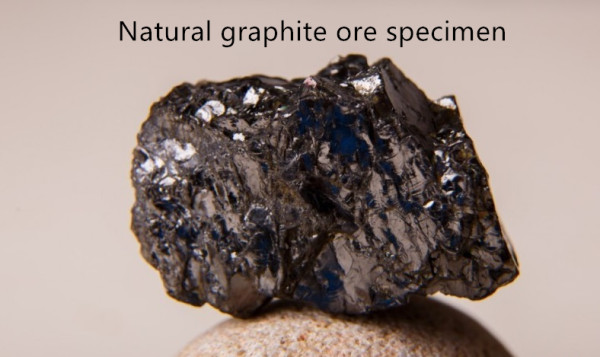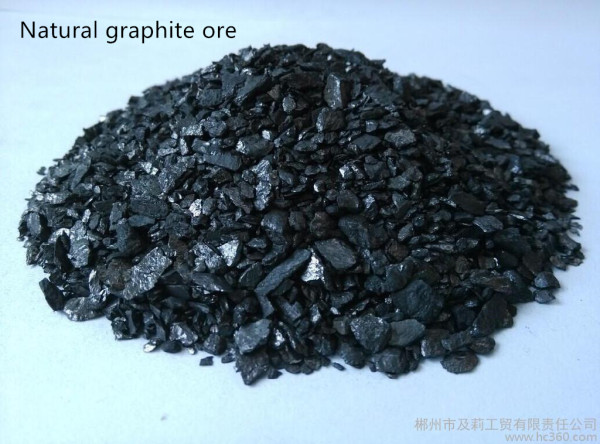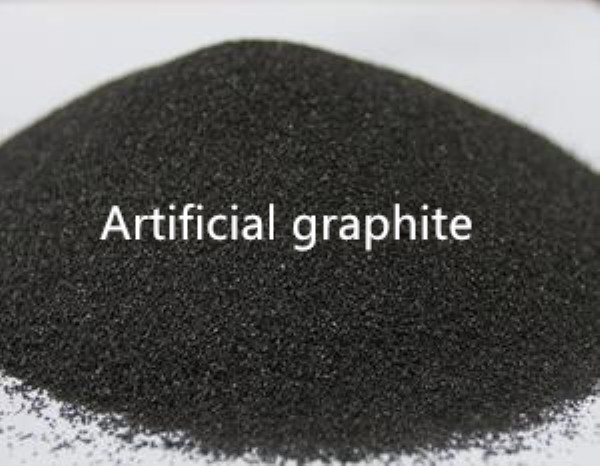Graphite can be divided into natural graphite and artificial graphite. The two structures are similar, and their physical and chemical properties are identical, but their uses are quite different. In many studies, some researchers did not notice the difference between the two and generally referred to as graphite. This result of confusing the two has caused a lot of misleading, even the mistakes of decision-making, resulting in a significant waste of resources and economic losses. In this paper, from the perspective of the composition and properties of natural graphite and artificial graphite, we will talk about the characteristics and differences of the two, as well as their essential links and application directions.

1. Graphite classification and characteristics:
1.1 natural graphite
Natural graphite is formed by the transformation of carbon-rich organic matter under the long-term action of high temperature and high-pressure geological environment and is the crystallization of nature. The process characteristics of natural graphite depend mainly on its crystalline form. Minerals with different crystal forms have different industrial values and use. There are many types of natural graphite. According to various crystal forms, natural graphite is classified into three types: dense crystalline graphite, flake graphite, and cryptocrystalline graphite. China mainly has two kinds of scale graphite and cryptocrystalline graphite.
1.2 artificial graphite
Artificial graphite is similar to polycrystals in crystallography. There are many kinds of synthetic graphite, and the production process varies widely. All graphite materials obtained by carbonization of organic matter and high-temperature treatment by graphitization can be collectively referred to as artificial graphite, such as carbon (graphite) fiber, pyrolytic carbon (graphite), foamed graphite and the like. In the narrow sense, artificial graphite generally refers to carbonaceous raw materials (petroleum coke, pitch coke, etc.) with low impurity content as binder, coal tar pitch and the like as binders, after compounding, kneading, molding and carbonization (industrially called A bulk solid material obtained by a process such as calcination and graphitization, such as a graphite electrode or a hot isostatic graphite.

2. The difference and connection between natural graphite and artificial graphite
Given the above-mentioned natural graphite as raw material, which is usually narrowly defined artificial graphite, this paper only analyzes and discusses the difference and connection between natural graphite and fine artificial graphite.
2.1 crystal structure
Natural graphite: crystal development is relatively complete, the degree of graphitization of flake graphite is more than 98%, and the degree of graphitization of natural microcrystalline graphite is usually below 93%.
Artificial graphite: The degree of crystal development depends on the raw materials and heat treatment temperature. In general, the higher the heat treatment temperature, the higher the degree of graphitization. The artificial graphite produced in the industry currently has a degree of graphitization of usually less than 90%.
2.2 Organizational structure
Natural flake graphite: It is a single crystal with a simple structure and only crystallographic defects (such as point defects, dislocations, stacking faults, etc.), and macroscopically exhibits anisotropic characteristics. The crystallites of natural microcrystalline graphite are small, the crystal grains are arranged in disorder, and the pores after the impurities are removed are macroscopically isotropic.
Artificial graphite: can be regarded as a multi-phase material, including a graphite phase transformed by carbon particles such as petroleum coke or pitch coke, graphite phase transformed by coal tar binder coated around particles, particle accumulation or coal tar pitch A pore formed by heat treatment of the junction.
2.3 Physical form
Natural graphite: usually in the form of powder, can be used alone, but usually used in combination with other materials.
Artificial graphite: It has many forms, both powdery, fibrous, and massive. In the narrow sense, artificial graphite is usually in the form of a block, which needs to be processed into a particular shape when used.
2.4 physical and chemical properties
In terms of physical and chemical properties, natural graphite and artificial graphite have both commonalities and performance differences. For example, natural graphite and artificial graphite are good conductors of heat and electricity. However, for graphite powder of the same purity and particle size, natural flake graphite has the best heat transfer performance and electrical conductivity, followed by natural microcrystalline graphite, artificial graphite. Lowest. Graphite has excellent lubricity and certain plasticity. The crystal development of natural flake graphite is perfect, the friction coefficient is small, the lubricity is the best, the plasticity is the highest, and the dense crystalline graphite and cryptocrystalline graphite are the other, artificial graphite. Poor.

3. Application fields of natural graphite and artificial graphite
Graphite has many excellent properties and is widely used in industrial sectors such as metallurgy, machinery, electrical, chemical, textile, and defense. The application fields of natural graphite and artificial graphite have overlapping parts and different places.
3.1 Metallurgical Industry
In the metallurgical industry, natural flake graphite can be used to produce refractory materials such as magnesia carbon bricks and aluminum carbon bricks because of its excellent oxidation resistance. Artificial graphite can be used as a steelmaking electrode, and an electrode made of natural graphite is challenging to use in a more demanding steelmaking electric furnace.
3.2 Machinery Industry
In the mechanical industry, graphite materials are commonly used as wear and lubrication materials. Natural flake graphite has excellent lubricity and is often used as an additive for lubricating oils. For the equipment that transports corrosive media, piston rings, seals, and bearings made of artificial graphite is widely used, and no lubricating oil is needed for work. Natural graphite and polymer resin composites can also be used in the above fields, but the abrasion resistance is not as excellent as that of artificial graphite.
3.3 Chemical Industry
Artificial graphite has the characteristics of corrosion resistance, good thermal conductivity, and low permeability. It is widely used in the chemical industry to make heat exchangers, reaction tanks, absorption towers, filters, and other equipment. Natural graphite and polymer resin composites can also be used in the above fields, but thermal conductivity and corrosion resistance are inferior to artificial graphite.
4. Conclusion
With the continuous development of research technology, the application prospect of artificial graphite is immeasurable. At present, the development of artificial graphite products using natural graphite as a raw material is one of the critical ways to expand the application of natural graphite. Natural graphite has been used as an auxiliary raw material for some artificial graphite production. However, the development of artificial graphite products with natural graphite as the primary raw material is not enough research. It is the best way to achieve this goal by fully understanding and utilizing the structure and characteristics of natural graphite and using appropriate processes, routes, and methods to produce artificial graphite products with unique structures, properties, and uses.




